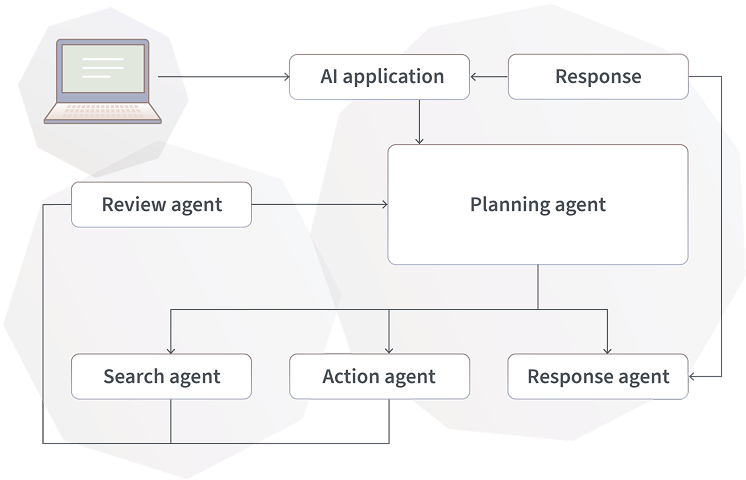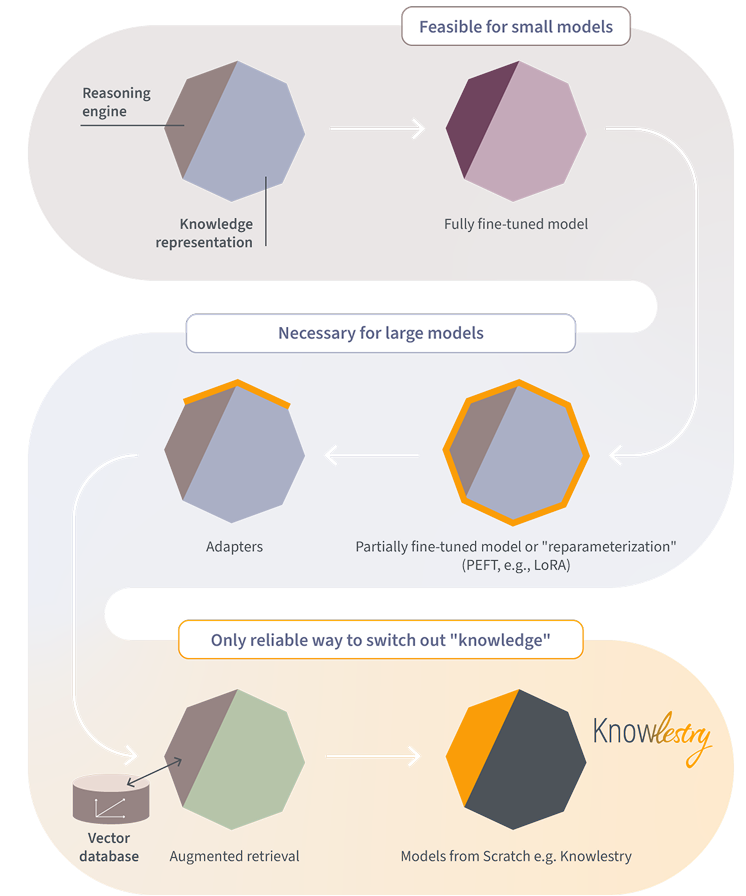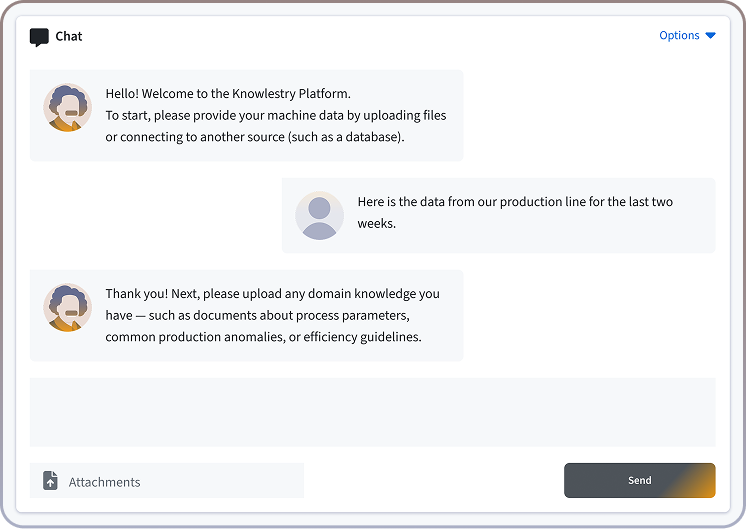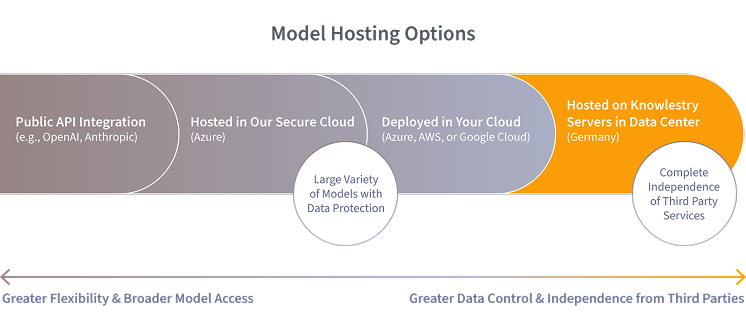Knowlestry's path to an autonomous AI agent
Discover how Knowlestry gets things done today, unlocking the potential to become a fully autonomous agent for industry in the future.
Start your project-
Hybrid AI Model Strategy
-
Self-Learning System
-
IP Protection per Design
What are AI Agents?
AI agents are software tools that autonomously perform tasks, make decisions and interact with their environment.
There are four elements that define fully autonomous agents: reasoning, external memory, execution, and planning.
Self-reflection in AI agents and logical framework
Adding advanced reasoning lets agents mimic human problem-solving. The system's feedback loops evaluate performance and offer quality assurance and decision-making.
Storage and recall of past interactions
In addition to the knowledge provided, agents require external memory to store and retrieve domain-specific knowledge and the limited context of the problem they are asked to solve.
Performing tasks and interacting with systems
Execution is where the agent puts its plans into action—interfacing with tools, APIs, or machines to carry out tasks. Robust execution ensures that insights lead to measurable results.
Ability to break down complex problems into sub-tasks
Agents follow a more human-like thought process. This process involves breaking work into smaller sub-tasks and plans, reflecting on progress, and making adjustments as needed.
Core Technical Components
AI Agents
Proactive knowledge building and intelligent processing
The main actions of AI agents are to inspect data, ask targeted questions, extend the Knowledge Hub, plan implementation, generate response, interpret results, request additional data and execute.
AI Agents use multiple input sources, including machine data, user instructions, knowledge resources and analysis results, to enrich their understanding.
Learn more
Hybrid AI Model Strategy

Foundation models for language processing, specialized models for precision tasks
Using advanced foundation models with Retrieval-Augmented Generation (RAG) and fine-tuning, allows Knowlestry to take advantage of their linguistic capabilities and rapid advances in AI.
For highly specific applications, such as generating precise data analysis pipelines, Knowlestry utilizes custom-built models that are designed for domain-specific expertise and high accuracy.
Learn moreSelf-Learning System
Continuous improvement and adaptive behavior
Adapting to User Interaction: The platform intelligently incorporates user interactions and feedback, improving response accuracy and optimizing recommendations for each organization.
With this self-learning capability, the platform ensures it stays at the forefront of machine data analytics while delivering increasingly precise and relevant insights.
Learn more
Natural Language Interface

Intuitive Communication through an advanced natural language interface
Users can interact with the system using natural language, eliminating the need for specialized technical knowledge. The system adjusts its interaction style based on the user's role, such as domain experts, data analysts, maintenance workers or managers.
Bridging Knowledge Gaps: Users can fully leverage their individual expertise without needing cross-disciplinary knowledge, ensuring efficiency and ease of use.
Learn moreReporting & Insights
Real-time dashboards display critical KPIs and customizable historical reports
Users can tailor reports to meet the needs of different stakeholders—whether executives require strategic insights, shop-floor teams need operational details, or customers expect transparency on performance metrics.
The system proactively generates routine updates and anomaly reports, ensuring that teams stay informed without manual effort. Automated notifications help users react quickly to deviations and optimize decision-making.
Learn more
Intellectual Property Protection

Intellectual property protection at its core
Strict Data Segmentation: No information, insights, or optimizations are shared between organizations, guaranteeing that intellectual property remains protected and confidential.
User interactions and feedback are used exclusively within the organization to optimize the models and knowledge hub, enhancing user experience and result quality without any cross-company data sharing.
Learn more